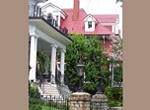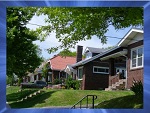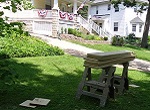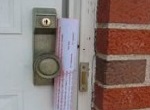Learning How to Promote Your Neighborhood: An Essential Skill
Last Updated: September 14, 2024
Your community needs to learn how to promote your neighborhood. You might reasonably ask why that is so important.
The answer is that the attractiveness of your neighborhood to residents, businesses, friendly investors, and maybe even your city government depends on your ability to create an awareness of your neighborhood and share positive news about it.
If your neighborhood looks more like a war zone than a magazine cover, you can still generate what was once called good press; you just have to work harder and be more creative. People respond well to stories of those who overcome difficulties, or even surmount them temporarily, so don't be too discouraged to look for the feel-good stories, which are present in every single neighborhood where I’ve done some work.
Why You Need Positive Buzz
Some of you might resist the notion that you
need to generate any hoopla, or you might have been burned by negative
neighborhood publicity. The first thing to say is that you need the
positive buzz just to build up a good impression of your area so that when bad
things happen—and they can happen anywhere—you have a little backlog of
favorable information with the public.
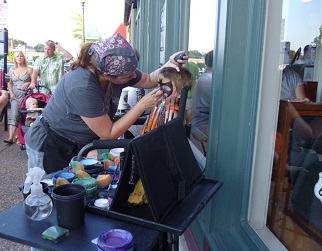
Wouldn't you rather have people say, "Oh that's unusual," if something bad happens, as compared to having them hear of your neighborhood for the first time when there is a particularly dramatic crime, corruption, or dilapidation story?
Realistically, the real reason you need the positive stories is that you need home buyer enthusiasm for your particular community. The housing market determines whether your neighborhood will succeed or fail, whether current residents see their investments in improving their property pay off, and indeed whether anyone feels like investing in maintaining or upgrading their homes at all.
Without a steady stream of willing buyers, you will experience what is sometimes called disinvestment at some point. You may think you are immune to this because everyone maintains their homes well right now, but if no one wants to buy the homes when residents leave or die, eventually property values will go down and the remaining residents first will become discouraged about upgrading their properties and second will become despondent about even simple maintenance.
If your neighborhood doesn't have a "brand," meaning people look blank when asked to think about your neighborhood character, eventually you will probably have a problem with property upkeep and resale.
So learning how to promote your neighborhood is incredibly important.
How to Promote Your Neighborhood
1. First, think through a strategy.
What do you want to accomplish with your promotion efforts? Are you trying to counter negative information? Do you need to simply build awareness that you exist? Are you interested in drawing more visitors and customers for local businesses? Is attracting buyers of homes or vacant buildings in your neighborhood a goal? Are you trying to reach a specific demographic, such as more young people, families, or retirees?
You don't need a lot of training to generate a "communications strategy." When you are just starting down this path, don't let anyone tell you that you must have an elaborate written communications plan either. But you should be able to make a list of the five to ten most important points you want people to remember about your neighborhood.
Spend half an hour at a neighborhood association meeting brainstorming what those points should be, and then assign a committee to argue about the merits of each one. Or use your executive committee for a change.
After you have the most important points safely recorded on one or two computers, then think about the most advantageous words and phrases to use to convey each point. Re-write your points until you have your key messages down pat.
For inspiration on creating or implementing a strategy, you or a neighbor may want to check for one-time seminars or short courses offered at your local community college or an adult-oriented program at a local university.
If you don't have anyone in your community organization with a marketing background, seek an intern from a local university for a semester. Better yet, manage an intern every semester for the university's benefit and yours. Marketing people will generate plenty of ideas to help attract positive neighborhood publicity. The challenge is that someone must supervise the intern, and in almost all cases, that requires a fairly big time and energy commitment. However, I always ask myself if an intern’s output has outweighed the supervision burden by even one more unit of work. If the answer is yes, the internship was worthwhile. This is a good way for neighborhood association leaders to evaluate this option as well.
2. Trumpet your Neighborhood on Social Media
No doubt you have some really dedicated volunteers, and if nothing else, you can tell stories about their hard work. In social media and texts, you don't have the space to describe outcomes, so you can get by with just dramatizing the fact that you are doing things, whether or not they bring results. This creates momentum and increases the likelihood that people will help you achieve a goal.
If you do not know much about social media and aren't a power user of sites such as Facebook, X (formerly Twitter), Instagram, or TikTok personally, you or someone you trust will have to learn. Incidentally, we are not suggesting in any way that your neighborhood association needs to use all of those platforms. Choose one first, master that, and then if you identify another platform as particularly well suited to your neighborhood's characteristics and the image you want to project, learn and master the second.
To attract any attention on social media, you need someone who becomes skilled at producing graphics quickly and attractively. If you have several people making graphics, you can use a platform such as Canva to create, store, and share graphics files or elements.
You can bet that some people in your neighborhood are quite proficient on one or more social platforms; seek out those folks and enlist them to help you. Then have them train other people in your neighborhood association or other community organization in how to be helpful in your chosen media.
Learn to be effective in the use of hashtags on X, formerly Twitter, and other platforms that have adapted this convention, with the goal of stirring up talk about either your neighborhood overall or to specific projects, events, and programs. A hashtag is a short word or phrase that starts with the pound symbol and allows people to continue discussing and referring to that word or phrase.
Enlist your own young people, beginning with middle school, to help you. They have the patience to hang out on the Internet for hours on end to blog and tweet about your neighborhood, where it is, what's happening right this minute, why it's important, how cool it is, who they saw there, and all that stuff. With younger children and teens, you definitely need a monitor before a post goes lives, but you can work out a system in which they email or text an officer the proposed post. The officer then can be the one who actually posts or approves the post.
Smart use of video has become very important in social media. The social platforms are where you can and should share short, very short videos that you folks make at an amateur level. If you show something interesting, you will be forgiven for lack of technical skill. Can you or a neighbor make a 30-second, one-minute, or two-minute video by walking around with your cell phone set on video? Yes, you can. You can try over and over again until you are satisfied with the result.
Think about the potential of Nextdoor, OneRoof, and other community-oriented apps to promote your neighborhood. My particular Nextdoor feeds tend to specialize in lost and found pets, people seeking recommendations for personal services and contractors, reports of good and bad restaurant experiences, and some griping about perceived rudeness of other people or inefficiency of government or business.
But there is no reason that these platforms cannot be used to report good things happening on a neighborhood scale as well.
Use your social media to promote contests, holiday celebrations, cleanups (see our pages on neighborhood park cleanups and stream cleanups, for example), paint-ups for porches or window frames of older adults, flower planting, your children's finger painting day, unusual or trendy fund-raising events, and newly decorated or installed fences, banners, benches, or flowerpots.
3. Cultivate reporters, local influencers, and bloggers.
Offer them silly freebies (we're talking T-shirts or caps, nothing more), take them on tours, and make their work easy for them in any way you can. Follow and Like them on their social media, and by all means try politely to get their phone numbers so you can text them some story leads. Take the trouble to explain your strategy for creating and maintaining a vibrant neighborhood, and convey the thought and energy behind it. For help on organizing a neighborhood tour, see our page on that topic. By the way, a tour for one or two influences should involve the same amount of planning as a bus tour for 48, rather than just "riding around."
4. Don’t overlook the tried and true newsletter approach.
Most neighborhoods send these as emails now. I’ve encountered a few that still print newsletters and leave them for distribution at neighborhood businesses. If you have the budget, the printed newsletter can be a good idea, providing you have writers and photographers that can make it compelling, as well as the budget to print it decently. See our neighborhood newsletter discussion for a broad overview of newsletter approaches. For concrete story ideas, this website has pages describing summer, winter, spring, and autumn hints. If you email newsletters, be sure to include influencers, business owners or managers who live outside your neighborhood, and local reporters.
5. Consider presenting online meetings or webinars aimed at your whole city.
These can highlight your neighborhood’s achievements. If you can make this a series rather than a one-time occurrence, it will be easier to build an audience that inevitably will lead to a better reputation for your neighborhood if you do this well.
This activity gives you the ability to draw from experts who don’t live in your neighborhood, but who can provide a third-party testimonial about what they find wonderful in your neighborhood. If you have a hot issue citywide, your neighborhood could take a lead role in providing a chance for experts or advocates on both or all sides of the issue to explain their position. Your neighborhood could moderate and sponsor this, providing both a project some of your residents may enjoy and an image-enhancing chance for you to shine.
6. benefit from preparing traditional press releases.
If you don’t know how to do this, find someone who does. These are distributed by email now, rather than by snail mail, so you will need to collect email addresses. Traditional media and influencers post an email address online, but for maximum effectiveness, ask individual reporters or writers for their direct email addresses when you meet them in person. Press releases can live on your website too.
7. Value your neighborhood businesses.
Ask them to include information about your neighborhood in their own advertising, websites, and social media. Think about incorporating QR codes into any signs that you have in your neighborhood, so that visitors can instantly connect to your website or a designated part of it to learn more about your forward momentum. If your signs are too expensive to alter, ask neighborhood businesses to post your QR code in their store windows. You see, there are many ways to get your message out that don't require much extra effort beyond the outreach and inclusion of neighborhood businesses, non-profits, and places of worship that you should be doing anyway.
8. Make sure your website and Facebook page are found.
You really must follow best practices for your website or page to be noticed. You or someone else active in your association needs to learn about search engine optimization for your website, and about how to maintain a consistent presence on Facebook.
Use the Arts to Promote Your Neighborhood
The other folks who will draw attention to your neighborhood are the artists. Yes, we know, they bring some out-of-the-mainstream behaviors, clothes, ideas, and just plain weirdness. But just think of this as self-expression and move on.
Arts-based community development is growing rapidly in the U.S. You could dip your toes into exploring the potential impact of visual arts by sponsoring a community mural project. Few things are as photogenic (photograph-worthy). If you have a nice budget, you may even want an iconic public sculpture to help your neighborhood branding. Our arts in public places page helps guide you through the artist selection process.
If you want to pursue this particular neighborhood publicity strategy, we suggest that you think about an arts and economic development pitch to your city government. Perhaps your neighborhood could even become a citywide arts district destination.
Especially if you are including and highlighting specific subcultures in your neighborhood, or if your community is a minority culture in the surrounding area, we suggest you think about a community cultural development approach.
If you have one or more music performers, groups, or venues active in your neighborhood, you may be able to build a reputation as a live music center. To pursue this tactic, you have to be ready for nightlife and all that comes with it. Yes, in my neighborhood, a group played chamber music on a residential lawn in late afternoons during the pandemic, but that is the exception rather than the rule. Our page on the night mayor concept gives some insight into possible nightlife issues, although the night mayor idea itself is way beyond anything most of you need.
Festivals, Neighborhood Tours, Parklets, Parades, and Other Neighborhood Marketing Opportunities
As our photo on this page shows, your festivals can showcase your own artists or those from nearby areas who will be glad to come show off their wares or enliven the streets with performance of many types. Rather than throwing more text at you, it makes more sense to send you over to the street parties page, which is a gateway to what our website visitors have sent us. You can mine those for ideas. By the way, we used the term street parties very loosely, so some may be on vacant lots and such instead of literally in the street. (As a side note, if you have had a great street party, write it up using the form on that page, and you generate a page on this website that you can use in your neighborhood promotion.)
Similarly, you could find an idea on our parklets page. A parklet is a term for a temporary, often one-day, use of a parking space or two to set up a miniature green space or gathering place. Also as mentioned earlier, consider setting up a neighborhood tour, which can take many forms and coincidentally, be a money-maker. You could have a house tour, garden tour, business tour, pub crawl, real estate for sale tour, or rehab opportunities tour for small-scale developers. Often this can be a walking tour, so in that case, it's a no-cost event for you. We haven't written about parades yet, but these also are opportunities to bring marching bands and their parents, proud dog owners, silly clowns, belly dancers, or hula hoop artists to your neighborhood while attracting a crowd.
Notice the common thread in this section. All of these are photogenic and easy for social and traditional media to feature. In a crowded media market, all but the most popular neighborhoods struggle to attract press coverage. But that television spot is golden if you can land one. Work hard to create something really unique and fun, hopefully involving cute animals and kids as well as some prop, event, or stunt that is totally unexpected. If you have a unique setting in your neighborhood (a Civil War cannonball hole in a building, an old mill, or a mountain peak, for instance), try to tie that in.
Make yours stand out from the crowd just a bit, pick a day that isn’t already cluttered with blockbuster events in your city, and you will soon find others promoting your neighborhood for you!
Summary and Further Reading
Of course, neither arts nor any other single silver bullet will apply to all neighborhood revitalization situations. But we think you improve your chances if you pick a communications strategy, periodically re-evaluate it, and systematically work on communicating a few message points rather than trying to do everything everywhere.
- Making and Keeping a Good Community >
- Community Organizations > Neighborhood Publicity
Join GOOD COMMUNITY PLUS, which provides you monthly with short features or tips about timely topics for neighborhoods, towns and cities, community organizations, and rural or small town environments. Unsubscribe any time. Give it a try.
